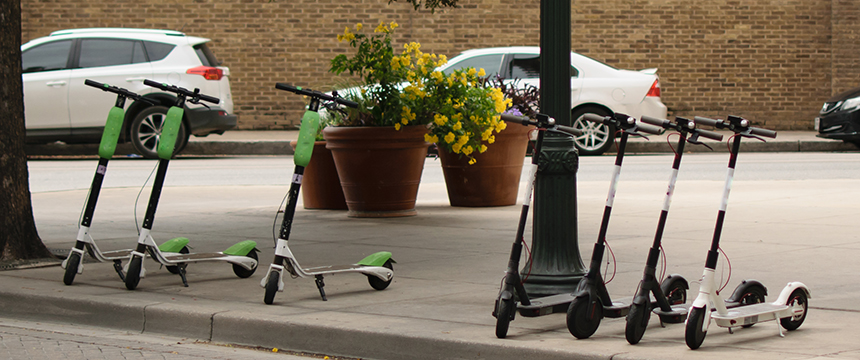
As cities prepare for not only the return of every park-visitor’s favorite seasonal bird, the menace known as the Canadian Goose, cities are also bracing for the seasonal arrival of scooter sharing services like Lime, Bird, Spin and their competitors along their curbs and on street corners throughout urban cores. Unlike the Canadian Goose, which does what it wants, when it wants, to whomever it wants to, cities are looking to not only reign in usage and set rules for operations, but also work with scooter sharing services as they struggle to tackle the Last Mile Issue plaguing cities around the world. A major component of this initiative includes maximizing the potential revenue cities and scooter companies can generate in an already congested urban fabric through fees and optimized usage patterns. We discussed the Last Mile Issue in our May 2018 blog post, Ride Sharing and Cities Team Up on Transit, Last Mile Issues. Unlike our recent post on Congestion Pricing, cities and scooter companies are looking to use data not to necessarily discourage usage in certain areas, but rather identify usage patterns and optimize placement in a way to be both effective for consumers and commuters, alike.
In recent weeks, the cities of Detroit, Charlotte and Omaha have announced their plans to begin aggregating and studying use and traffic patterns associated with scooter sharing services. This will include ride duration, scooter usage, parking patterns and curbside utilizations throughout their cities. Lime has noted that the intended goal of this partnership is “to both determine the right fleet size through data and jointly achieve mode shift, sustainability and accessibility objectives” in their partner cities.
In forming a partnership between Lime, Passport, and City of Detroit, Detroit was looking to tackle the high concentration of scooters in the urban core, at the expense of surrounding neighborhoods. Realizing that scooters cater to both urban tourists and commuters, Detroit and other cities are struggling to optimize their distribution while still catering to all interested parties.
Although Detroit has capped any one scooter company at 400 total scooters within the city limits, the city plans to use the data to monitor “how our citizens are using these new forms of mobility and be more strategic about managing scooters using supply/demand economics”. Although Detroit’s initial policy required at least 100 scooters be placed outside of the Downtown and Midtown neighborhoods, noticed that most scooters would concentrate around the urban core by mid-day, often creating a transit vacuum in surrounding neighborhoods. By incentivizing riders and companies to redistribute scooters throughout the city, Detroit hopes to “create a fee scheme for where the scooters are dropped that would incentivize companies to more strategically locate their scooters” in areas that would better serve consumers in both a transit and tourist approach.
It has yet to be seen if optimized pricing and incentives will alter company and consumer behavior towards a more equitable and efficient transit marketplace, but the cities are hopeful for future initiatives. Cities hope that with more data and better management through Congestion Pricing of city-center traffic and Dynamic Pricing of Transit 2.0 initiatives will not only be better for consumers overall, enable cities to optimize the “design [of] infrastructure that can help shared mobility services grow safely and sustainably”.